Acromyrmex versicolor - Desert Leafcutter Ant Colony Founding
Watching new Desert Leafcutter Queens founding nests in the deserts of Arizona
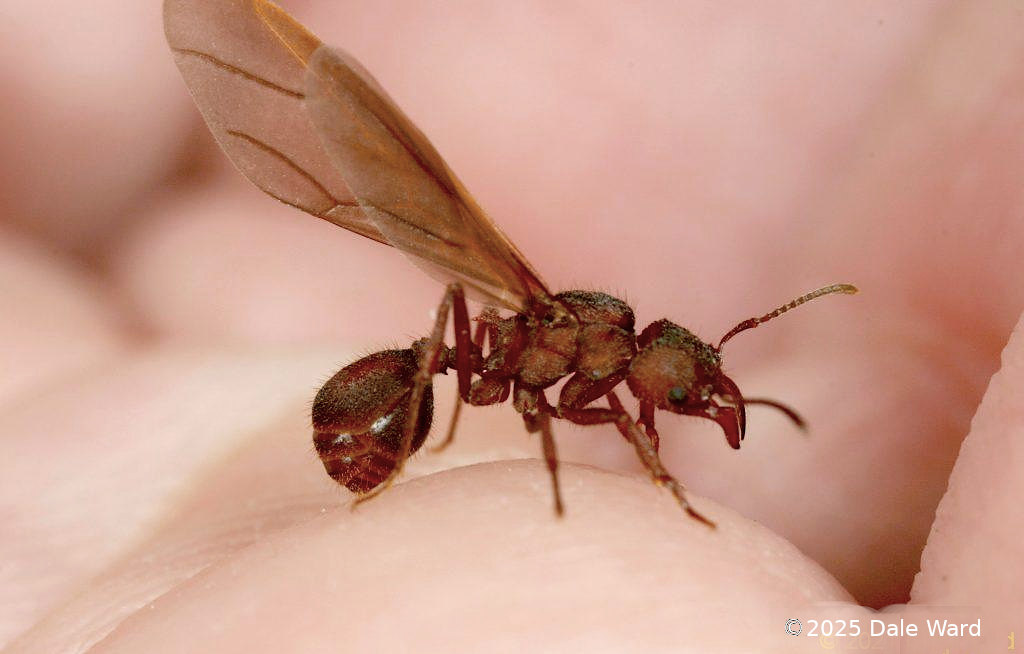 Winged queen of _Acromyrmex versicolor_, with my fingers for scale
Winged queen of _Acromyrmex versicolor_, with my fingers for scale
After the presumptive joys of the Desert Leafcutter Ant mating flight, life gets hard for the newly mated Leafcutter Ants.
The newly mated queens fly away. They’ll find what they hope is a good spot for a new nest site. They’ll break off their wings - they won’t need to fly again. Then they will either team up with another newly mated queen and start a nest together, or they will begin excavating a new nest by themselves.
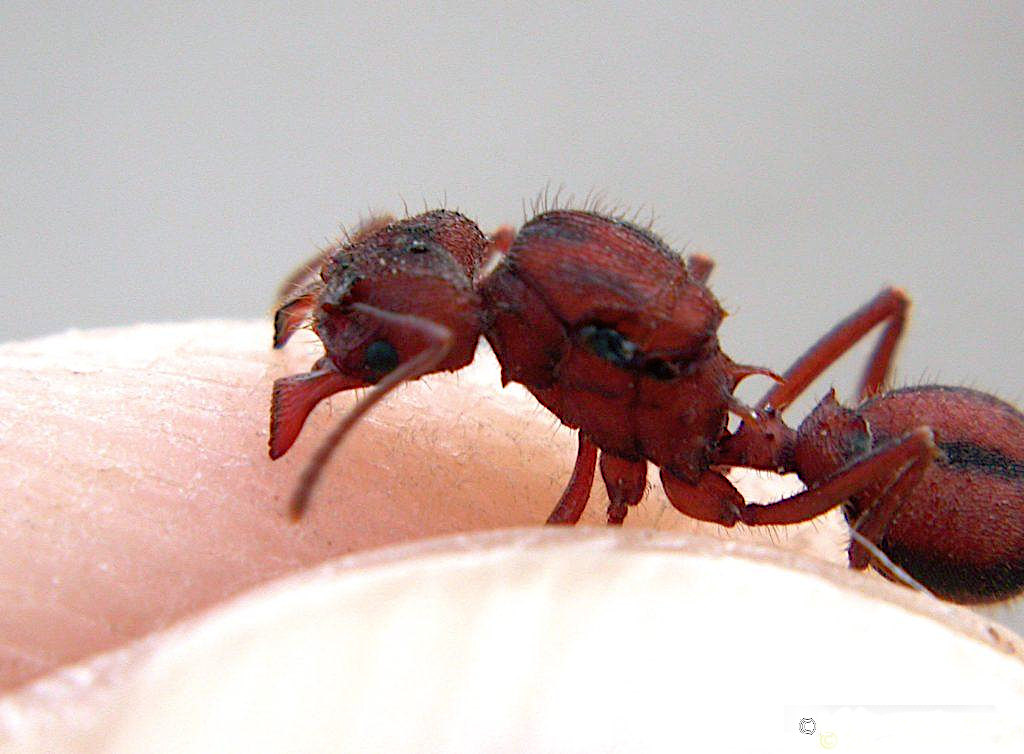 Wingless _Acromyrmex versicolor_ queen, held in my fingertips for scale. You can see the scars on her thorax where her wings had been attached before she broke them off.
Wingless _Acromyrmex versicolor_ queen, held in my fingertips for scale. You can see the scars on her thorax where her wings had been attached before she broke them off.
It seems as though everything likes to eat the newly mated Leafcutters, and the desert floor fills with ants looking to catch the protein-rich queens. The queens are in a race - get shelter before they get eaten.
The Leafcutters die in droves. Whenever I’d go out after a Leafcutter mating flight, I’d find reams of ants butchering the queens and the males.
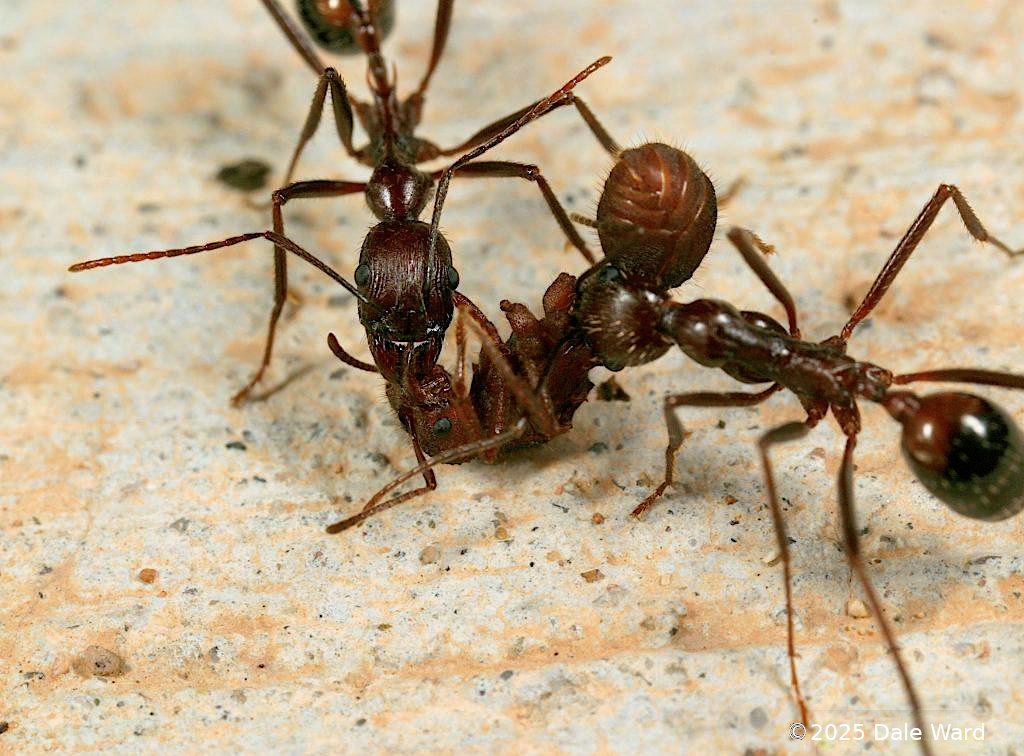 _Novomessor cockerelli_ workers dismembering an _Acromyrmex versicolor_ queen
_Novomessor cockerelli_ workers dismembering an _Acromyrmex versicolor_ queen
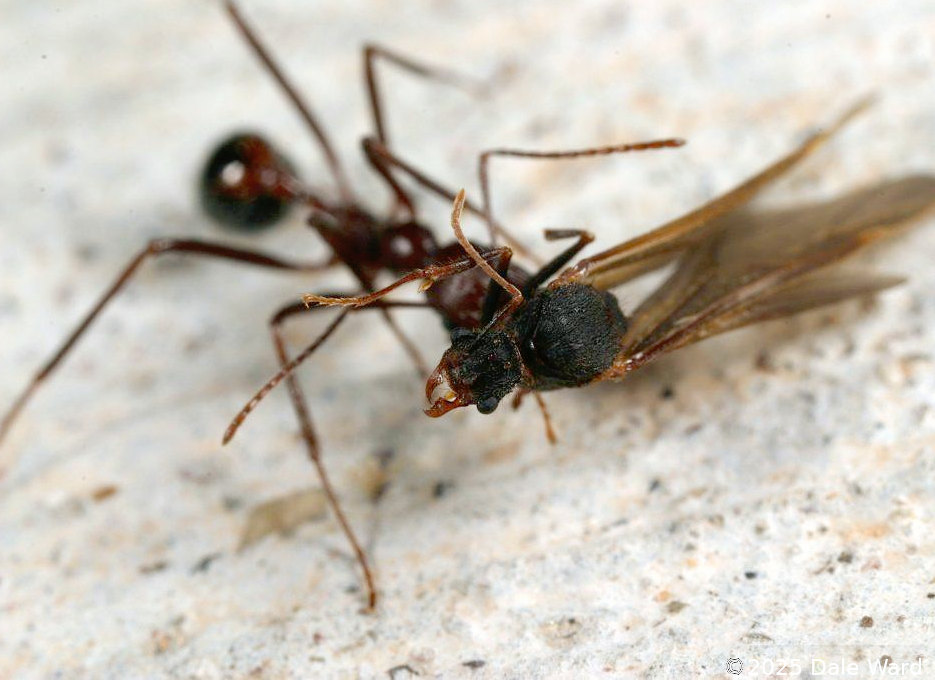 _Novomessor cockerelli_ worker captures an _Acromyrmex versicolor_ male
_Novomessor cockerelli_ worker captures an _Acromyrmex versicolor_ male
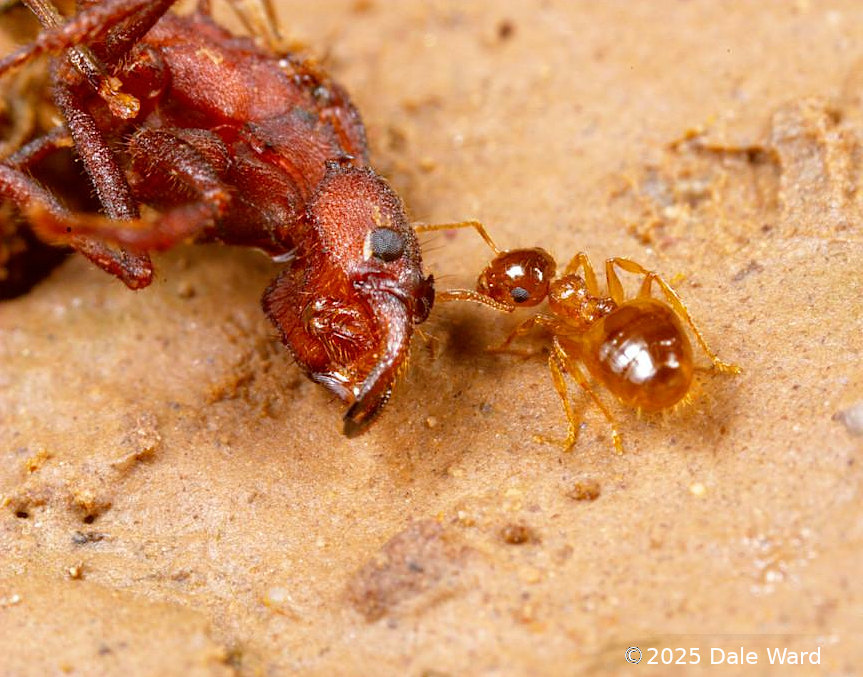 Crematogaster minutissima worker and Acromyrmex versicolor queen
Crematogaster minutissima worker and Acromyrmex versicolor queen
Even ants that I’d thought of as primarily being seed-eaters take advantage of the helpless yet protein-rich Leafcutters.
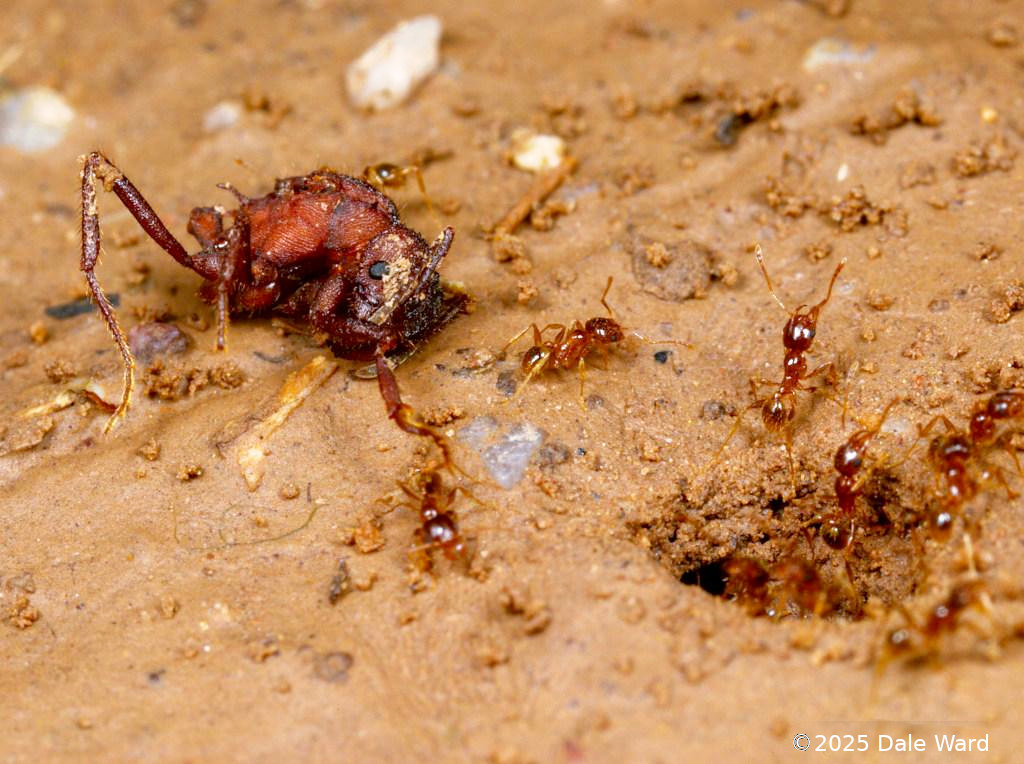 Pheidole (gilvescens?) minor workers bring dismembered Acromyrmex versicolor queen back to their nest
Pheidole (gilvescens?) minor workers bring dismembered Acromyrmex versicolor queen back to their nest
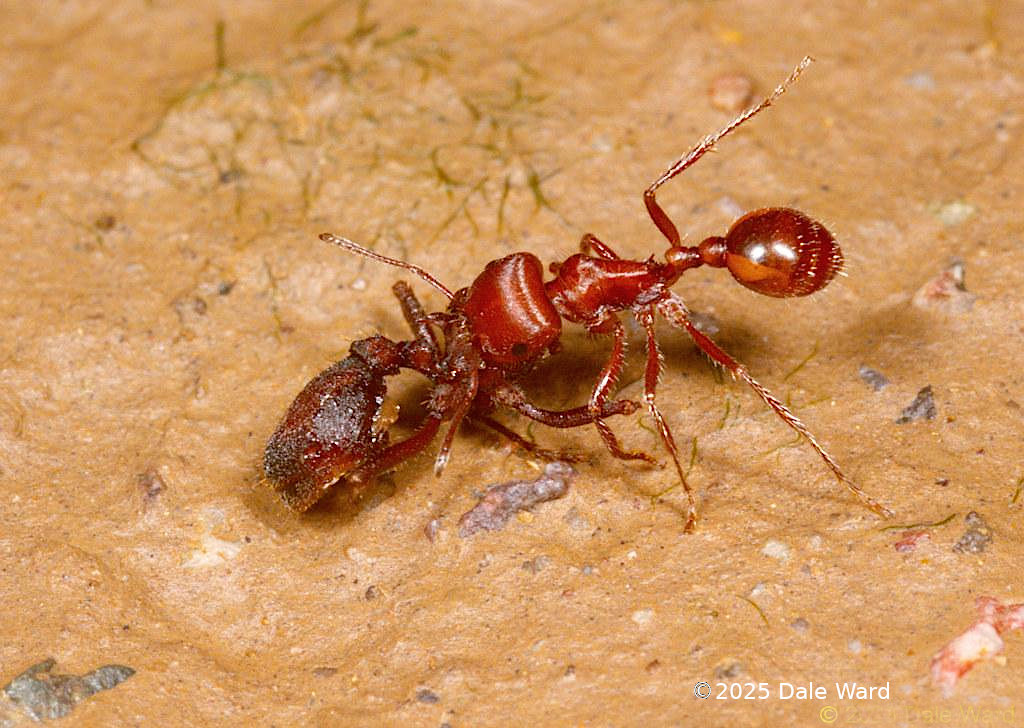 The newly mated Acromyrmex veriscolor sexuals are extremely vulnerable. Even ants that are ordinarily seed eaters, such as this Pogonomyrmex desertorum, take the opportunity to capture the Leafcutters.
The newly mated Acromyrmex veriscolor sexuals are extremely vulnerable. Even ants that are ordinarily seed eaters, such as this Pogonomyrmex desertorum, take the opportunity to capture the Leafcutters.
The queens try to dig their new nests as quickly as they can. Since Leafcutters usually have their mating flights a day or so after lengthy periods of rain, at least the ground is soft for digging.
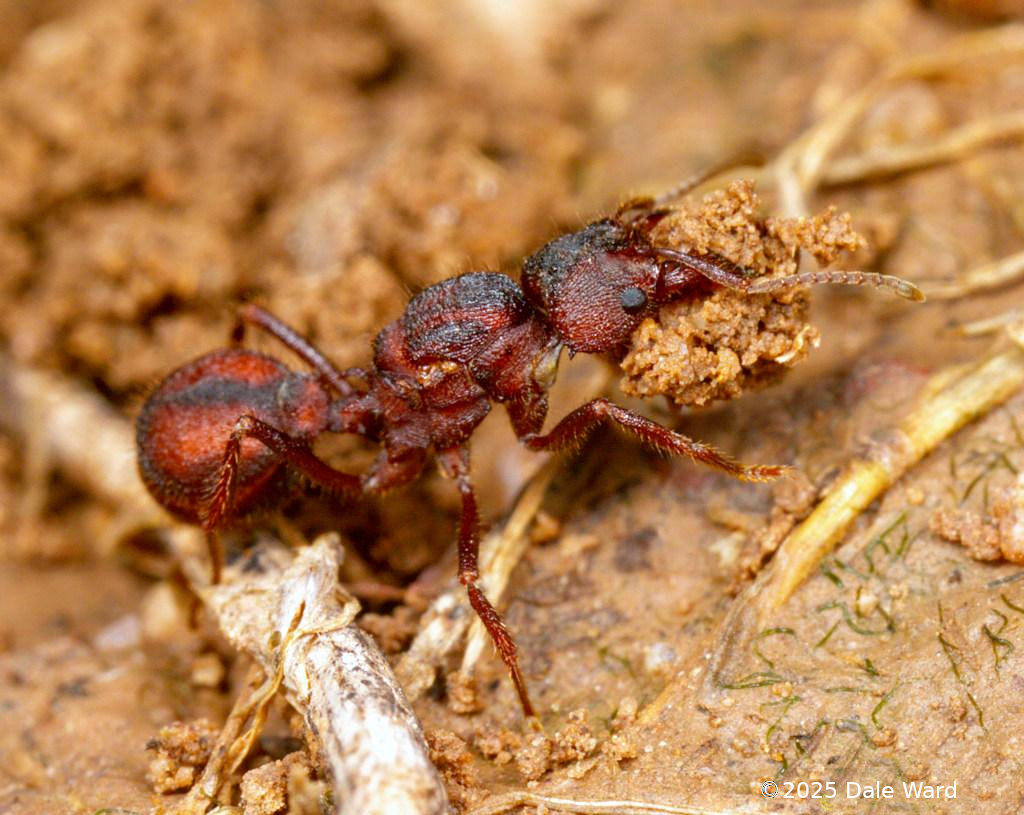 Acromyrmex versicolor queen excavating her nest
Acromyrmex versicolor queen excavating her nest
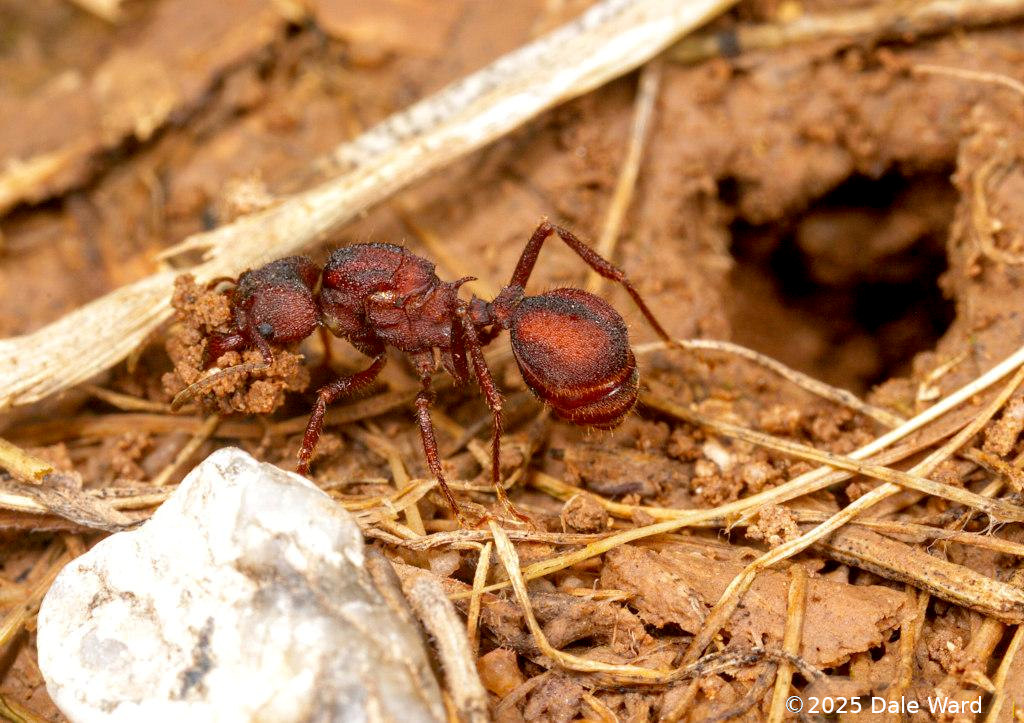 Acromyrmex versicolor queen excavating her nest
Acromyrmex versicolor queen excavating her nest
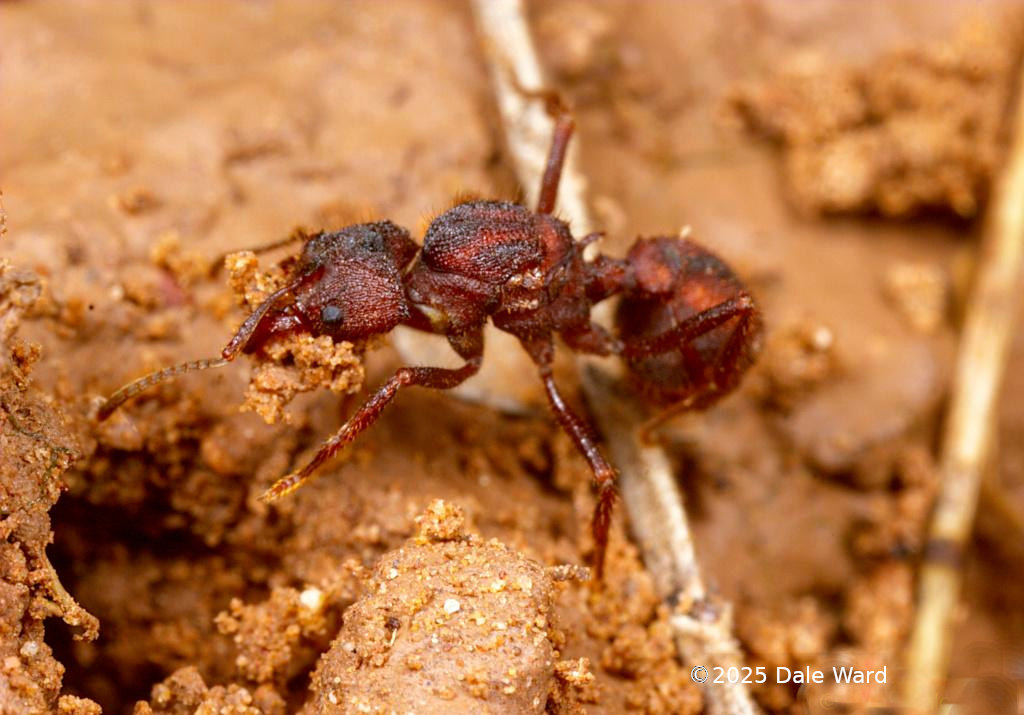 Acromyrmex versicolor queen excavating her nest. She’s got to do this quickly - the world is a dangerous place for an exposed queen ant.
Acromyrmex versicolor queen excavating her nest. She’s got to do this quickly - the world is a dangerous place for an exposed queen ant.
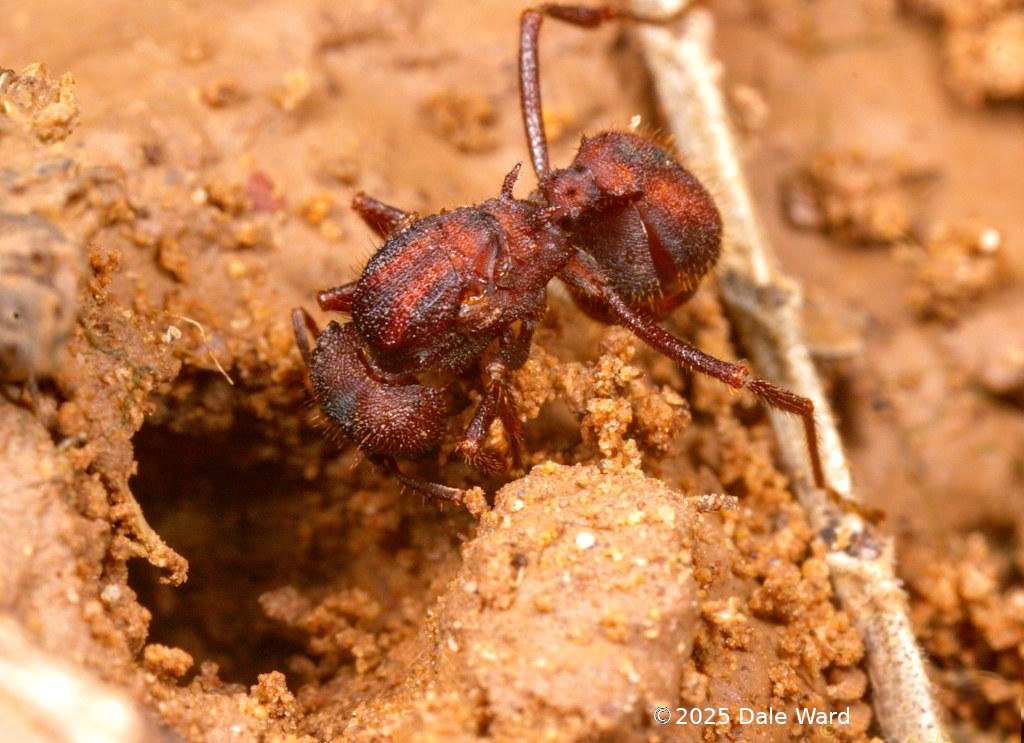 New Acromyrmex versicolor queen excavating her nest
New Acromyrmex versicolor queen excavating her nest
As mentioned earlier, Leafcutter queens don’t always “go it alone” when starting new nests. They’ll frequently band together with other queens.
I don’t know if that “banding together” includes the new queens entering older, established Leafcutter colonies, or if it’s just restricted to new, “starter” colonies.
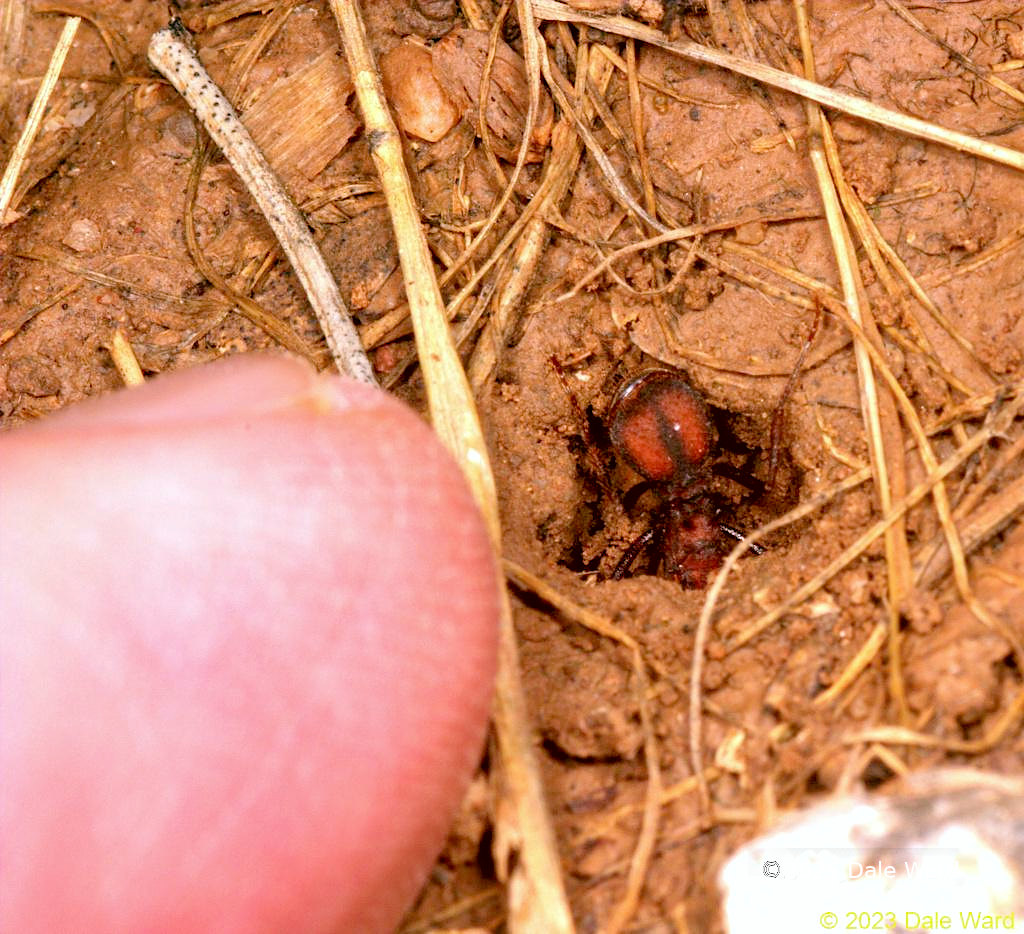 Acromyrmex versicolor queen excavating her nest. My finger for scale. You can just see her thorax and gaster in this photo, her head is in the incipient nest.
Acromyrmex versicolor queen excavating her nest. My finger for scale. You can just see her thorax and gaster in this photo, her head is in the incipient nest.
As part of starting a new colony, the queens need to get a fungal garden up and running. They’ll leave the relative safety of their new nests to gather bits of vegetation. When the queens left their home nests, they took small samples from their home nest’s fungal garden. They carry the small bit of fungus in the infra-buccal pocket of their mouths when they leave for the mating flight.
They’ll inoculate the vegetation they gather with their fungus sample, kick-starting their fungal gardens. That’s what they’ll use to raise their first crop of workers.
In the case of queens that have teamed-up with other queens, usually one of the queens goes out to gather the vegetation and the other stays safe in the nest.
It’s all seems very unlikely, yet there it is. This whole process is just another “impossible thing to believe before breakfast”.